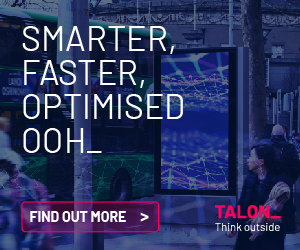
 Monitoring your brand’s reputation in the media, whether it’s online or offline, has always been an important task for communications professionals but with the increasing prevalence of data and social media, it has become crucial, writes James O’Connor.
Monitoring your brand’s reputation in the media, whether it’s online or offline, has always been an important task for communications professionals but with the increasing prevalence of data and social media, it has become crucial, writes James O’Connor.
In a 24/7 media environment, protecting reputation is now clearly a top priority for companies meaning communications professionals must dedicate part of their role to monitoring their reputation online. Brand building has also become increasingly relevant as corporate communications functions integrate more and more with marketing functions.
Communications pros have broader responsibilities – positioning their company across all audiences (including clients) and managing and monitoring messaging through a variety of channels and media, both offline and online.
In these circumstances, today’s communications pros must expand the scope of their media monitoring and analysis activities. What will be their focus in this field over the coming years? Let’s now look at five of their core media monitoring tasks.
1. Put reputation at the centre of the company
Now more than ever the communications pro must be able to listen to what’s being said and detect the early signs of a crisis to be in control of their company’s or brand’s reputation.
How can you stay on top of what is happening across both traditional and digital media data? How should you respond within such a fast-paced environment? A robust, mobile-responsive cross-media monitoring platform is no longer just desirable, but essential to success.
Listening and respect for stakeholders
Increasingly, boards are expected to run their organisations not just in the financial interests of shareholders, but also in the interests of broader stakeholders.
Consumers, employees, prospective customers, interest communities, supporters, opponents… the number of stakeholders is expanding greatly, and the role of influencers in the social media age is increasing in strength.
According to the 2015 Edelman Trust Barometer, “CEOs and government officials [are] the least credible sources, lagging far behind academic or industry experts and a person like yourself.”
An article published by the Institute for PR has even identified three emerging groups of stakeholders: It is the future task of public relations professionals to support the faith-holders, engage the hateholders and reveal the fakeholders. Successful companies will have to figure out where these are active in the new media landscape.
Reputation data drives success
Analysing reputation data is becoming an essential part of every executive’s dashboard, as an important factor in overall business performance. So, reputation analysis and evaluation are now more than ever at the core of the communications professional’s job.
2. Make 360° monitoring and analysis a key focus of your communications strategy
Social media and traditional media are complementary. When one informs, the other relays. And vice versa. We are increasingly seeing major news stories break and grow online. Also, news stories from credible, trustworthy traditional sources frequently get many shares on social media. In any case, today’s stories are often more complicated to understand as media data can circulate through a variety of channels.
Today’s cross-media communications strategies need adequate measures. Cross-media monitoring and ad hoc media analysis are key. Analysing social media is as important as analysing mentions of your company and its brands in traditional media channels. The “information path” must be taken into account with an overall vision, within the context of ongoing communications campaigns.
Then a media analyst can determine the relevance of editorial content, grasp the nuances, place these elements into perspective along with other typologies of media, use weighting strategies and thus determine the media impact of 360-degree brand communications.
3. Apply human analysis when interpreting big data
Today’s media monitoring platforms can track thousands of relevant topics as they appear in social and traditional media. This media data is plentiful, sometimes overwhelming.
Beyond tracking, a platform can also help you save time, identify trends and influencers, or analyse key aspects that can support the evaluation of a communications campaign. Which social media channels had the most/least interaction? Which topics drove conversations? Who were the influencers that supported my campaign? Should we invest in Facebook to keep a particular audience engaged? These questions can be answered using analytics.
However, automated tools can only go so far and should serve as a starting point for a human-led research process. In-depth analysis by an expert is needed to unlock the true value of big data and glean actionable insights.
Machines + Humans = Magic formula
Big Data represents a significant risk as data can be false or non-exhaustive. For example, how can a monitoring tool interpret social media content accurately, including any irony, context-dependent sentiments, slang or emoticons? There’s no fully automated system, and there’s no substitute for a human reviewing and interpreting the data.
Communications directors increasingly need to surround themselves with people who can analyse data and produce actionable insights from the numbers. Communications and marketing departments with advanced data analysis skills lay the foundations for long-term success going forward.
4. Manage information flows in a logic of conversation and sharing
Passive vs Active
In the new media world of immediacy and multiple channels, the company must take the floor and generate dialogue with multiple and various publics.
Today’s communications pros act as interfaces with these publics. What is really new is that they now need to converse with all of the people creating conversations, including clients: it means interacting and conversing with them on multiple media; letting them know that their company is making the effort to be accessible to them; responding in a speedy manner to all customer inquiries, questions, comments and complaints; being available to them via mobile and through multiple touchpoints to contribute to a seamless customer journey.
Proactive media monitoring
It also means ensuring active – and proactive – media monitoring. As media evolves ever faster, managing the PR function now includes mastering global ‘information flows’ instead of handling isolated media contacts. Communications pros have to proactively know where conversations are happening, and where their company or brand can and should step in. Instead of reactively taking part in the ongoing conversation, they work more in a collaborative way. Monitoring online reviews can also lead to insights that can be used to improve consumer experience or brand image.
5. Become actors of Branded Government by understanding your environment
Communications professionals are now expected to actively share their company’s or brand’s commitment. According to Henry Mason from Trendwatching Institute, 73% of millennials don’t believe governments alone can resolve societal issues and 83% expect companies to become more actively involved. Trendwatching Institute calls this trend ‘Branded Government’: consumers are increasingly expecting brands to pay attention to their ethical behavior and environmental responsibility. They want brands with clear values.
Companies must be more courageous and engaged and strengthening their brand personality will get them noticed. Why? People like to know that they are doing something positive with their money. Before buying a product or service, they want to know that it works and has been tested – but they are also interested in the benefits: jobs provided, income created, and other economic and social benefits. According to the 2015 Edelman Trust Barometer, personal and societal benefits are key for 81% of respondants!
As a result, communications pros need to better control their company’s environment. They increasingly have to be aware of the consequences for their company, by anticipating potential issues that could affect their business, keeping track of news within their sector, and following the influencers and specialist sources.
Real-time continuous monitoring is also part of environment-aware communications strategies. Communications teams need a clear, updated view of the trends in their market or relevant economic and social issues in order to focus on more than just the products or services they sell.
James O’Connor is Marketing Manager, Reputation Intelligence, Kantar Media.
First published in Irish Marketing Journal (May 2016)© to order back issues please call 016611660




















